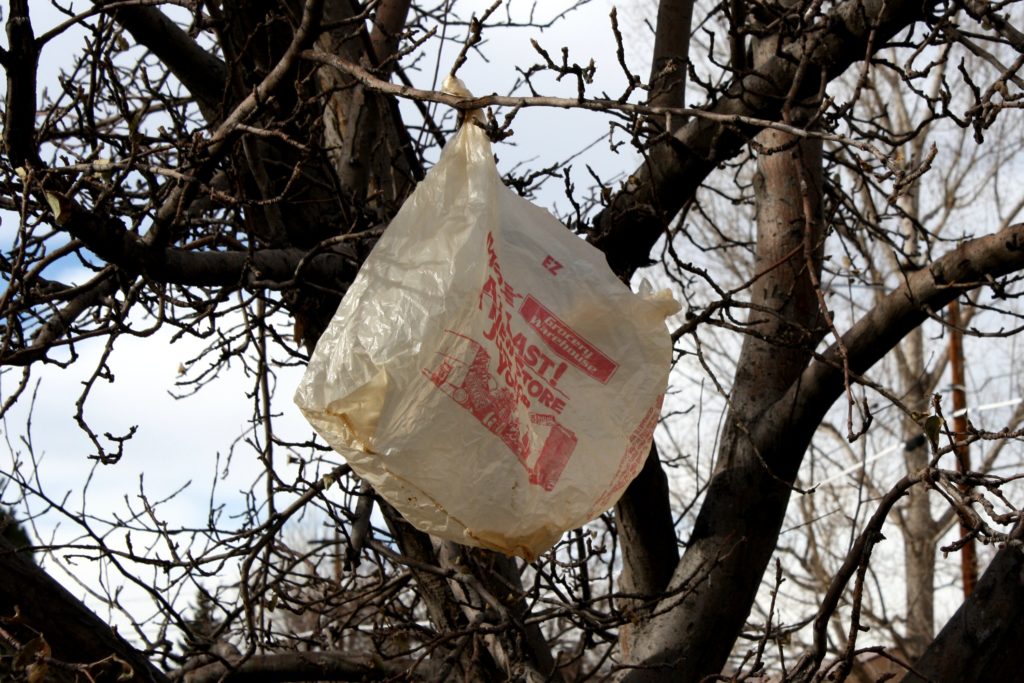
What if every smoker in Connecticut stopped smoking? What a boon to the health of the citizenry! However, the state would be out about $365 million in annual cigarette tax revenue.
Virtually the same thing just happened. The state’s largest retailers stopped offering disposable plastic check-out bags to customers Thursday, rather than begin paying Governor Lamont’s new 10-cent tax on each bag. The new state budget includes $55 million in plastic bag-tax revenue over the next two years. With the state’s retailers going cold turkey, that revenue is unlikely to materialize.
Historically, most disposable plastic bags have originated in grocery stores. According to grocery industry group, Connecticut Food Association, CFA members have used about 450 million plastic bags a year. Recently, the largest CFA members, Stop & Shop and Big Y, announced their no-plastic policy and implemented it Thursday. According to CFA President Wayne Pesce, the rest of the industry is almost certain to follow suit.
Other types of Connecticut retailers have accounted for an estimated 250 million disposable plastic bags in past years. The bags they use may not be as uniform as supermarkets. The new bag-tax applies to bags with a thickness of less than four one-thousandths of an inch. Many clothing stores, for example, use thicker plastic bags not subject to the tax.
Some big retailers, such as Walmart, don’t offer customers a paper bag alternative. However, rather than introduce paper, they could opt to increase the thickness of their plastic bags to avoid the tax.
This wouldn’t be corporate misbehavior. To understand why, we need to get into bag economics. According to CFA, disposable plastic bags cost retailers about a penny each. Single-use paper bags cost about 7 to 10 cents each. So retailers can’t just switch to paper without incurring costs, which they must either absorb or pass on to customers.
Arguably, luxury retailers can absorb the cost, but grocers cannot. It is a thin margin business. Continuing to use disposable plastic bags would cost $45 million in taxes annually, while substituting paper at their own cost would cost the state’s grocers about $27 million to $41 million. Stop & Shop and Big Y have announced that they will charge customers 10 cents per paper bag.
Before we go any further into business economics, let’s summarize the impact upon the state’s citizens. They will have to pay up to about $45 million in yearly paper bag fees at supermarkets. And, if the state is unlikely to collect the $55 million in plastic bag-tax revenue, what will Lamont and the Democrats do? Raise other taxes, right?
The paper-versus-plastic comparison seems to be a damned-if-you-do and damned-if-you-don’t proposition. Is there a way out? The consensus view is that reusable bags are the best environmental alternative. Both Stop & Shop and Big Y have announced free giveaways and/or discounts on reusable bags in August – but will charge full price for them thereafter, as they have previously.
Without engaging in the environmental side of the issue, suffice it to say that things are complicated. It is unarguable that we should try to protect the environment. How is debatable. What is highly debatable is the wisdom of instituting so-called sin taxes designed to tax sin out of existence: does the tax change behavior or does government become addicted to the revenue?
The financial implications of Governor Lamont’s plastic bag tax are clear. Connecticut residents will pay more at the supermarket and elsewhere, and the state’s taxpayers will have to pay more taxes in order to replace plastic bag tax revenue unlikely to be collected. Thankfully, Lamont’s bag tax will sunset into an outright plastic bag ban in 2021. But where will Lamont find $55 million in his next budget? As previously noted, taxpayers beware.
In the meantime, the financial impact is likely to show up alongside several other items and push the state budget into deficit sooner than later, namely hundreds of millions of as yet unidentified labor savings included in the budget, the as yet un-agreed cost to settle the lawsuit over the state’s highest-in-the-nation hospital tax, and the $180 million in tax revenue the governor claims over and above the official Consensus Revenue Forecast.
Maybe a continuing economic expansion elsewhere in the nation and an ongoing stock market advance will bail out Lamont’s budget. Maybe not. It’s certainly not in the bag.
![]()
Red Jahncke is a nationally recognized columnist, who writes about politics and policy. His columns appear in numerous national publications, such as The Wall Street Journal, Bloomberg, USA Today, The Hill, Issues & Insights and National Review as well as many Connecticut newspapers.

